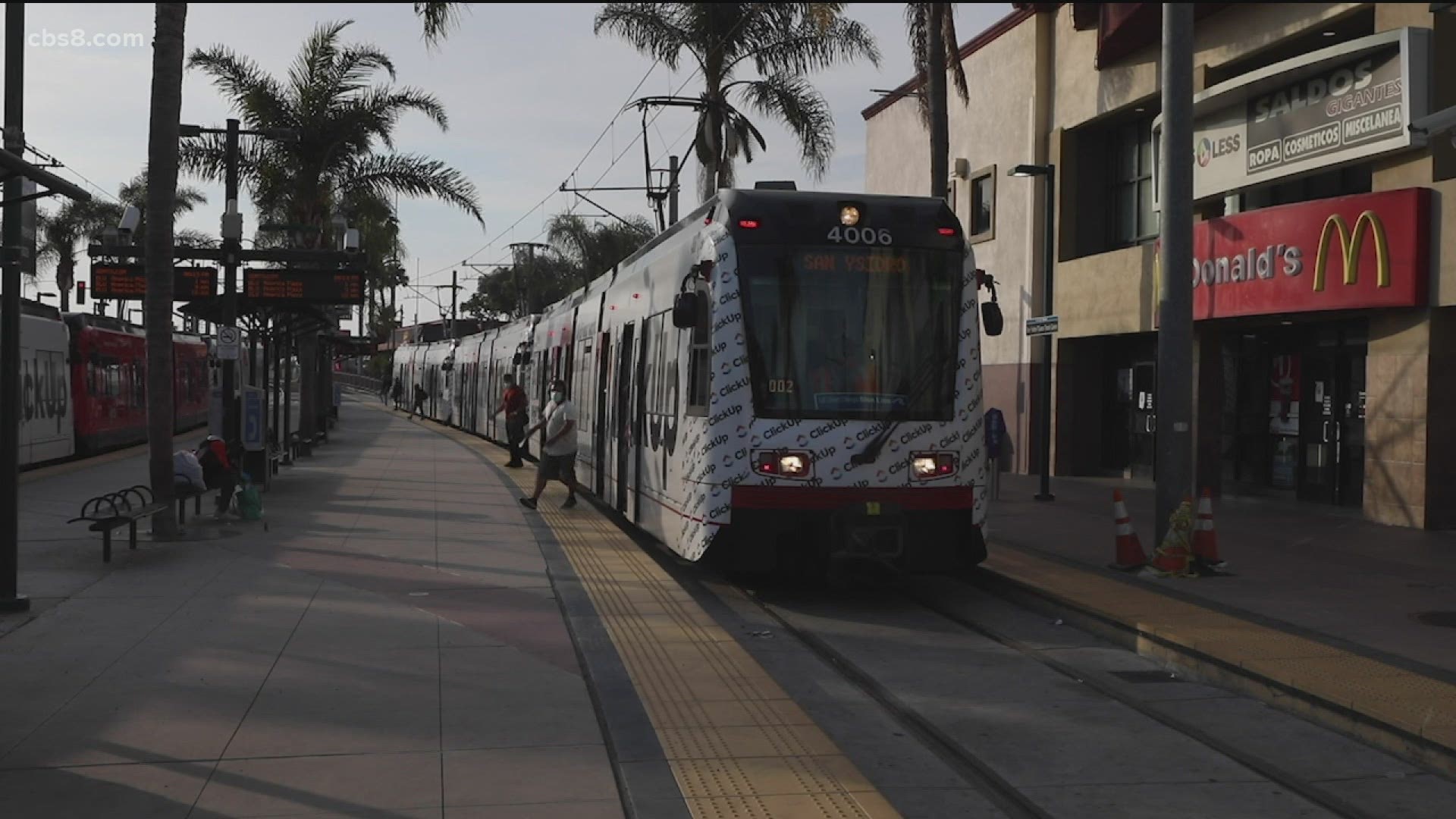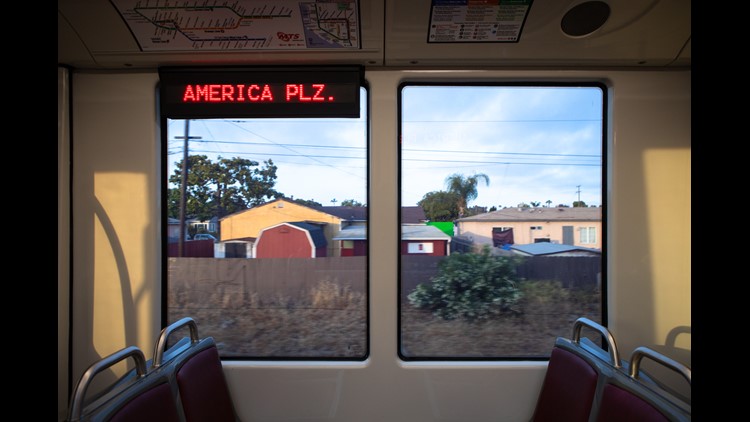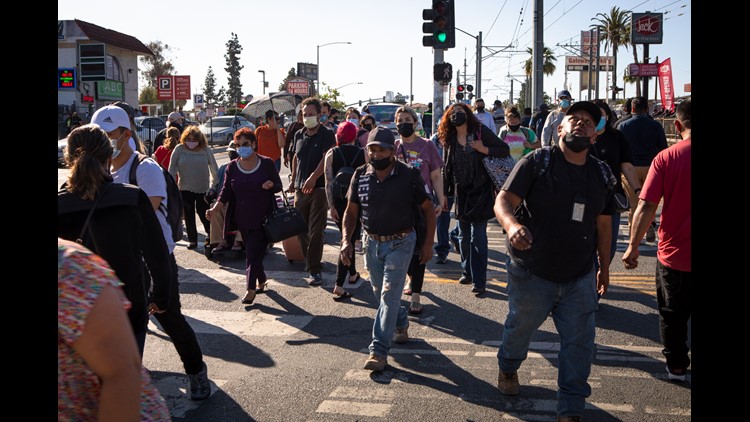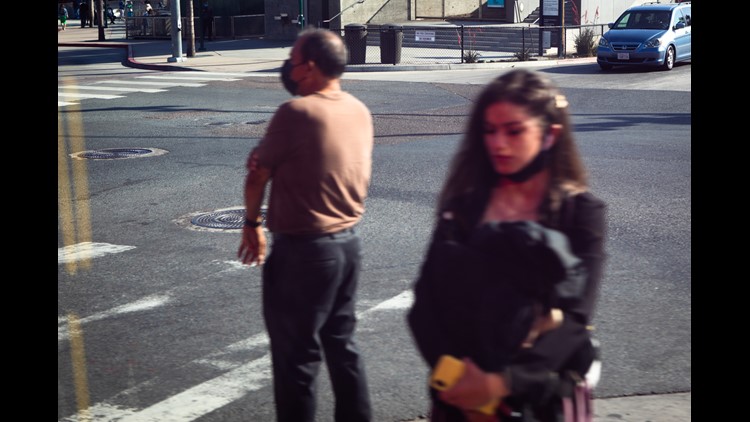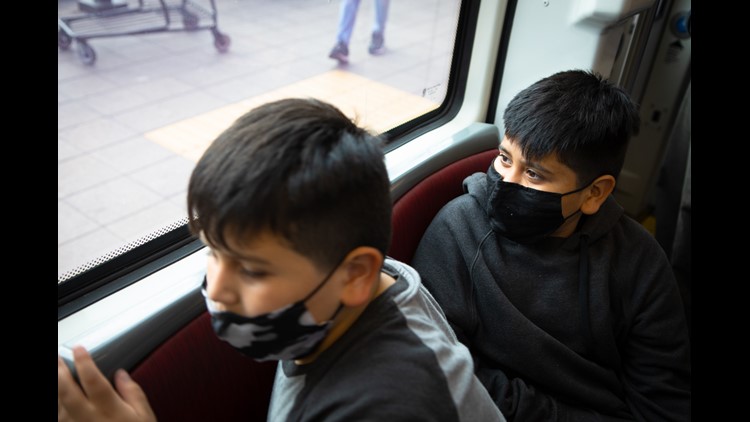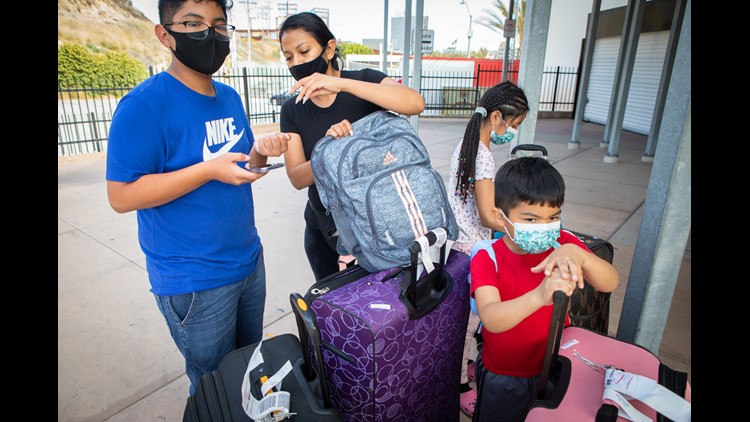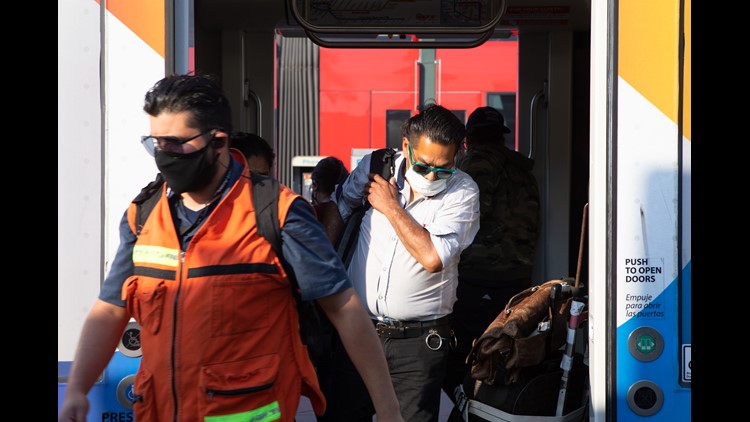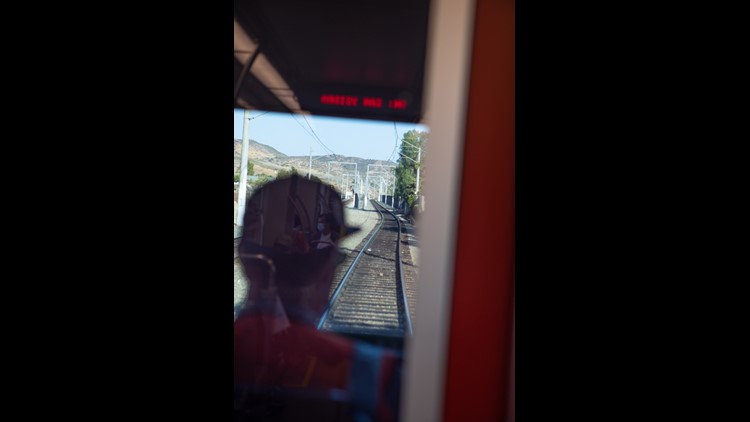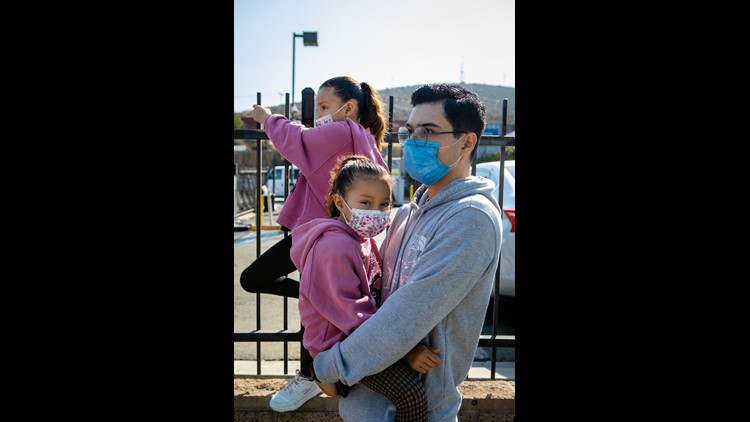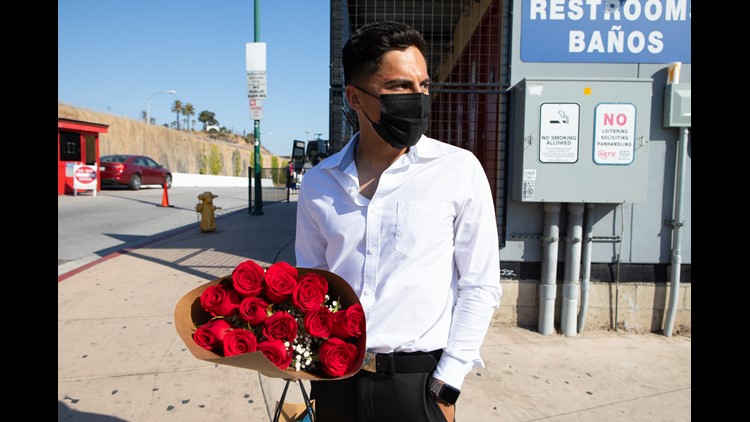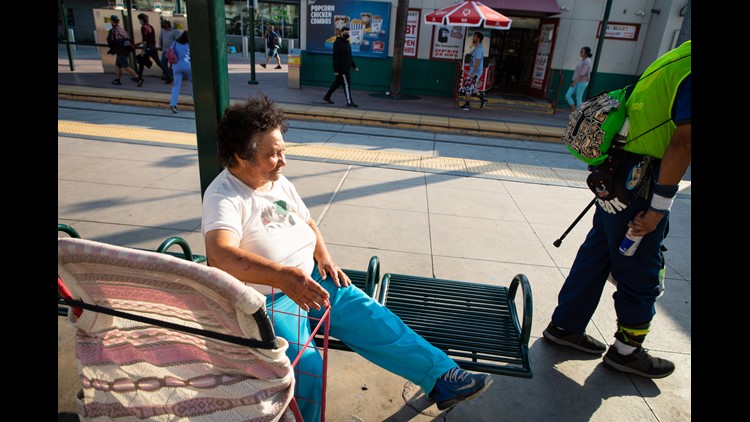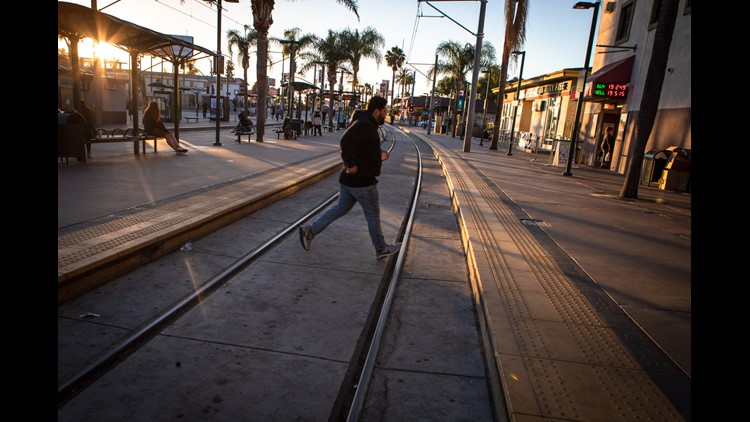SAN DIEGO — Brian Contreras wakes up at 5 a.m. in his Tijuana home to begin his hours-long commute. He’ll ride his bicycle to the U.S.-Mexico border, where he’ll endure a lengthy wait to cross before catching a roughly 10-mile ride on the trolley from San Ysidro to National City.
Now 25, Contreras has used the trolley for roughly two decades — first as a young boy to visit family in San Diego, and now to get to his job at Amazon.
“Really, I don’t see a difference,” Contreras said of the San Ysidro station. “It’s the same.”
San Diego County’s southernmost trolley stop serves as its front porch to one of the busiest land border crossings in the world. With its large crowds of South Bay residents and users from Mexico and beyond, the station boards nearly 12,000 daily passengers onto the Blue Line, the most-used route in the San Diego Metropolitan Transit System.
But a closer look reveals where the San Ysidro center falls short. The station is a confusing collection of transit options in a heavily congested area, forcing pedestrians to battle vehicle traffic and trolley tracks. Its public restrooms are outdoor caged stalls that cost 50 cents to use, and the private owner of the station’s landmark McDonald’s building imposes time limits at its tables.

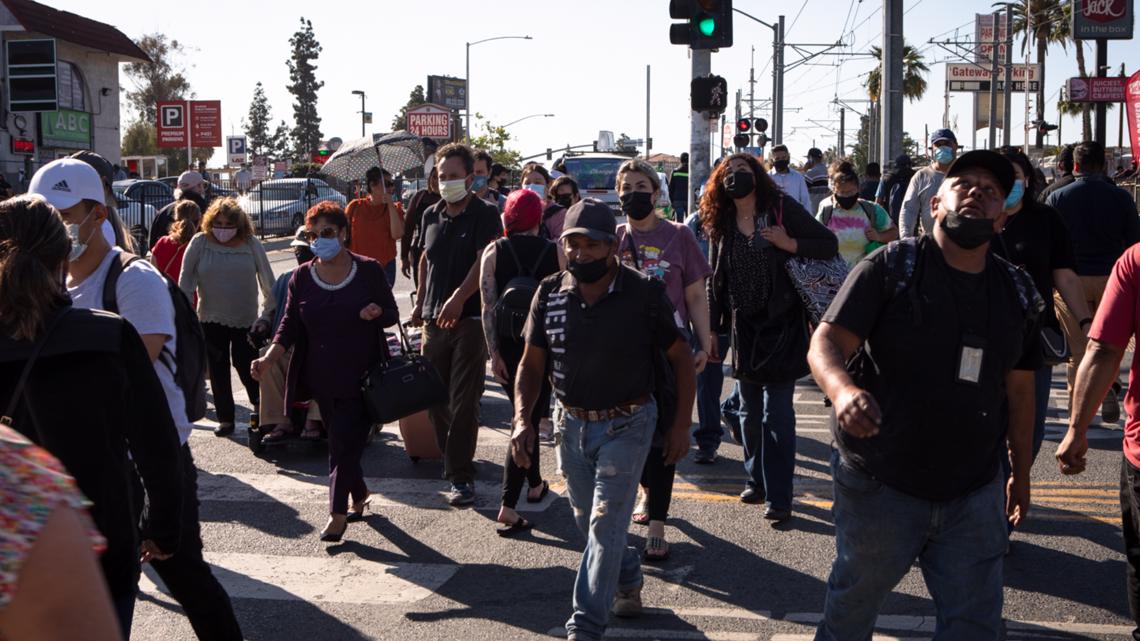
“When I cross from Mexico going into the United States — what is welcoming our customers, essentially? What is welcoming our workers?” said San Diego City Councilmember Vivian Moreno, whose district includes San Ysidro. “And really, right now, I don’t think it does it justice. I don’t think the welcoming is a good welcome.”
Community leaders have criticized the conditions for years, saying transportation officials have allowed the station to remain in a dismal state even as it generates millions of dollars every year. The San Diego Association of Governments and partner agencies unveiled a concept in 2014 to expand the center for as much as $150 million, but the project was never funded.
Advocates argue the long-ignored transit needs are another example of San Ysidro hosting the Port of Entry — a critical economic engine for the San Diego-Tijuana region — but seeing little benefit. It remains one of the region’s poorest neighborhoods, with a median household income 40% less than that of San Diego citywide.
Now, SANDAG again is rethinking the border’s trolley station as it prioritizes equitable transportation. Under the agency’s latest regional transportation plan, San Ysidro would host one of 30 future “mobility hubs.” SANDAG officials said it would be “comparable in terms of scale and function” to the hub proposed near downtown.
But that plan carries a bigger price tag — and an even longer timeline for San Ysidro, where residents have long felt passed over for other projects around the city despite years of raising concerns.
“Something shiny and new might not go in downtown to make it equitable,” said Lisa Cuestas, head of local nonprofit Casa Familiar. “That’s a hard pill to swallow for the majority of San Diego and for the majority of voters.”
inewsource asked government officials and community leaders why the San Ysidro station project has taken so long and the status of current plans. Here’s what we learned.
Photos: The busy San Ysidro Transit Center
The San Ysidro station: What’s wrong with it?
The San Ysidro Transit Center is one of the most-used stops in the 53-station MTS rail system. It’s second only to the downtown stop at 12th Street and Imperial Avenue, which services all MTS trolley lines.
But despite its popularity, the San Ysidro station has long suffered from a daunting design — even as the federal government invested more than $741 million into a Port of Entry expansion.
Surrounding streets are busy. The station sits at the end of San Ysidro Boulevard, which serves as the only entrance for some paid parking lots near the border. Vehicles attempting to quickly drop off or pick up passengers and the on-ramp for Interstate 5 North that sits kitty corner from the trolley stop contribute to regular backups. (Despite the congestion, records show only about nine traffic-related incidents near the station over the past three years.)
Travelers, many with suitcases in tow, fill the sidewalks as they navigate heavy vehicle traffic and trolley tracks. Wildcatting — offering illegal shuttle services to passersby — also is a known problem around the station.
The trolley platform and long-distance bus terminal are separated by the McDonald’s building. Inside, signs remind visitors that loitering is prohibited and only building customers are permitted. Outside, a walkway up to the bus terminal on the southern end smells of urine.
The conditions have been admonished in court. In a lengthy case involving MTS and Grand Central West, the McDonald’s property owner, San Diego Superior Court Judge Katherine Bacal called the building “dark and dirty” and said neither party “should be proud about the state of their property.”
“If you're walking down there right now, it's kind of scary,” said Antoinette Meier, SANDAG’s director of mobility and innovation. “There really isn't good pedestrian infrastructure or bike infrastructure. There's just a lot of traffic and it's chaotic. So we really want to fix that.”
Why the delay?
Transportation officials spent nearly two years exploring the best way to improve the San Ysidro station. The result, born out of extensive community input, was a concept for a new Intermodal Transportation Center: An “iconic development” at the border with an expanded trolley platform, retail property and pedestrian-friendly improvements.

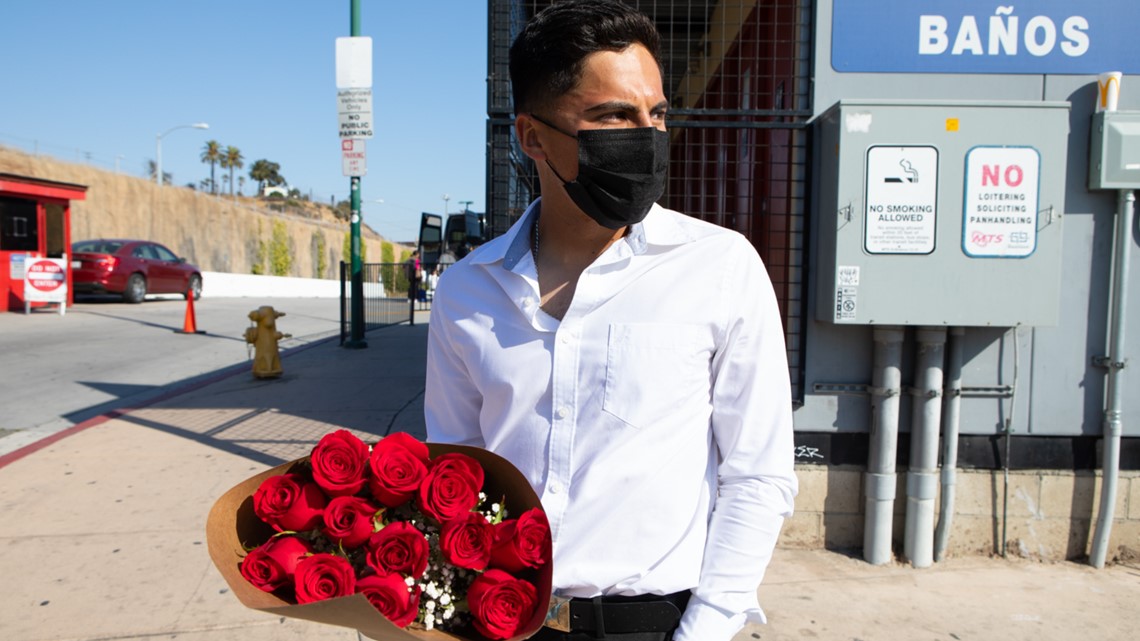
It was “highly unlikely to be completed in this decade,” the study warned, citing the cost and land acquisition that would be needed to make it happen.
That was seven years ago. Lack of funding — and momentum — have dogged the project ever since.
It was listed for funding under a 2016 sales tax effort known as Measure A, but voters rejected it. The project also was originally to be part of MTS’ recently discussed Elevate San Diego funding proposal, but the agency’s board postponed taking it to voters because of the pandemic.
Moreno, a San Ysidro resident herself, said there hasn’t been a leader who has pushed the project to reality. She said it’s been one of her top priorities since taking office in December 2018.
“I recognize that this is a regional asset,” Moreno said. “And me as a councilmember, it’s my duty now as an elected official, as a board member of SANDAG, to really, really advocate for this project.”
Residents have grown weary. Casa Familiar, one of San Ysidro’s leading service organizations and a regular participant in community input sessions, told SANDAG in planning documents that the community holds “distrust for any large-scale planning efforts and promises.” It specifically cited “constant neglect of requests and needs” involving the trolley stop at the border.
Cuestas, Casa Familiar’s CEO, said the region’s transportation agencies historically have shown little interest in communities of color. More than 90% of San Ysidro residents are Hispanic.
“They’ve been getting away with it for many years,” Cuestas said. “They’ve been getting away with substandard infrastructure and stations making a lot of money for them.”
What’s the significance of the San Ysidro station?
The San Ysidro Port of Entry, which sees 20,000 pedestrians and 70,000 vehicle passengers cross into the U.S. daily, is key to the San Diego region. San Ysidro businesses, especially, rely heavily on the thousands of workers and tourists who make purchases on both sides of the border.
The binational traffic is also crucial for MTS, which sells almost half of its day passes for buses and the trolley at its facilities near the border.
Before COVID-19, the San Ysidro station saw more than $740,000 in monthly ticket vending machine sales — by far the highest in the system. The second highest was the Virginia Avenue station, also located at the border, which saw almost $130,000.

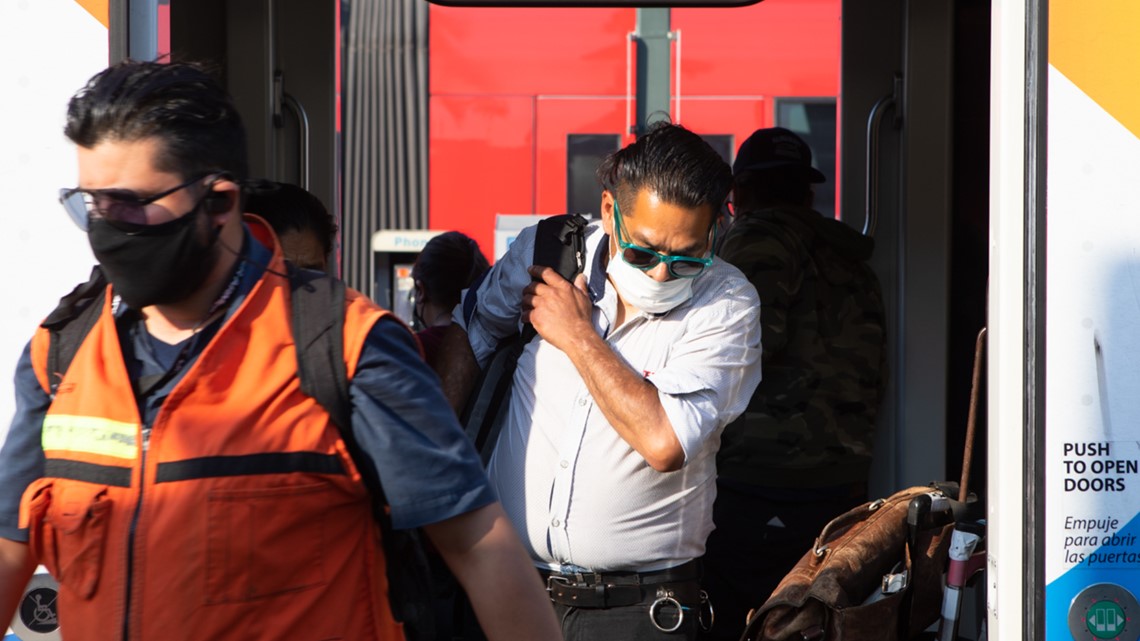
MTS wouldn’t provide how much it spends to operate the San Ysidro stop, saying it doesn’t track operational costs by station. Spokesperson Rob Schupp told inewsource it costs about $39 million annually to operate the Blue Line, which has what MTS calls the best “fare box recovery” — about 73% of costs are covered by ridership.
That makes it the least-subsidized trolley line in the system while running double the frequency of the Green and Orange lines.
Schupp said MTS has little capital to construct new facilities, which is primarily SANDAG’s role.
“The way we invest is by committing as much transit service to areas that need it most,” he said.
Yet San Ysidro remains one of the county’s most disadvantaged. More than half of its residents are considered low income, and 40% of those over 25 don’t have a high school diploma.
In a community that saw its neighborhoods divided by the construction of interstates 5 and 805, roughly 10% of households don’t have a vehicle.
SANDAG acknowledges that transportation construction has hurt poor neighborhoods. The job now, it says, is correcting those wrongs.
Coleen Clementson, director of regional planning, said SANDAG’s goal is an equitable transportation system “so that everyone can participate in the economy and everyone can thrive.”
“It can't be (SANDAG) sitting in a room and saying, ‘Here's how you do that,’” Clementson said. “We need to engage the communities that are impacted and have them right with us side-by-side doing the planning.”
But transportation officials will need to fully understand those wrongs, said Jason Wells, executive director at the San Ysidro Chamber of Commerce.
“Having access to a transit line does not mean that’s equitable for everybody,” he said. “And what I mean by that is, sure, the student in San Ysidro has transit connections to go to San Diego State, but it takes them 2½ hours.”
Wells added, “The point is, unless you’re in the shoes, it takes a lot of work to understand what the inequities actually are. And I don’t have faith that they’re willing to go through that much.”
What’s the latest plan?
SANDAG’s proposed regional transportation plan, required by state and federal law, carries a $163 billion price tag. Its cornerstone project is a roughly $4 billion central mobility hub near downtown that would serve more than 10,000 residents and create a transit connection to the San Diego International Airport.
A 15-second video rendering for San Ysidro’s mobility hub shows a pedestrian-friendly space at the border, with bicycle paths, gathering areas and expanded transit services.
SANDAG’s Meier said it’s a relatively new concept. She expects the project will still include some elements from the 2014 study.
“We weren’t talking about mobility hubs when that plan was developed,” Meier said. “So now we’re thinking more than just the transit platform itself, but how do you improve mobility and the larger area around the Port of Entry and around the transit center?”

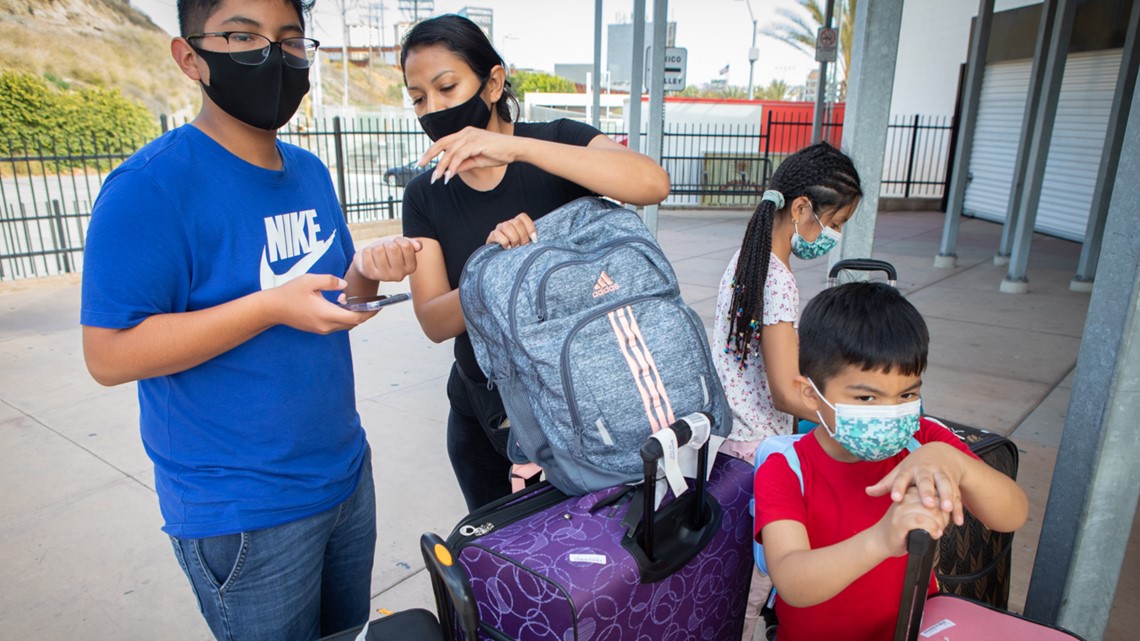
But a would-be hub at the border carries the same problem as the past concept: It remains unfunded and would take years to complete. If officials do find the $200 million needed to complete the project, construction isn’t slated to be done until 2035.
“It’s going to require San Diegans to step up and agree that this is something that we as a region want to pay for,” said SANDAG’s Clementson.
In San Ysidro, officials are taking it back to step one: another study to see how the latest plan would fix the popular trolley stop at the border. SANDAG and MTS will fund the $3.6 million needed to complete it.
County Board of Supervisors Chair Nathan Fletcher, who also heads the MTS board, said the agency is committed to improving the station.
“Our team has listened and understands the improvements riders and the neighbors surrounding the intermodal transit center want to see made to improve the user experience, reduce congestion and keep pedestrians safe,” Fletcher said in a statement to inewsource.
Cuestas at Casa Familiar said she doesn’t oppose another study. But if officials truly want equitable transportation, she said, San Ysidro residents would need to see projects in their neighborhood completed in a timely manner.
“When and if an elected official says, ‘You gotta keep pushing, you gotta keep advocating,’” she said, “OK. But do your research of how long communities have been doing that.”
Do planning experts think this all makes sense?
Expanding the San Ysidro station would be an ambitious project — and it’s battling other transit needs and funding challenges, planning experts said.
Randy Torres-Van Vleck, policy and planning director at the City Heights Community Development Corp., said South Bay communities have historically been left “on the back burner of our regional transportation investments.”
The San Ysidro station project would likely need a regional player like SANDAG to bring the parties together to move it forward, he said, along with political and community backing.
“We do grapple with that a lot — how do we turn plans into projects?” said Torres-Van Vleck, who grew up in Chula Vista. “Some plans never become projects, and some do.”

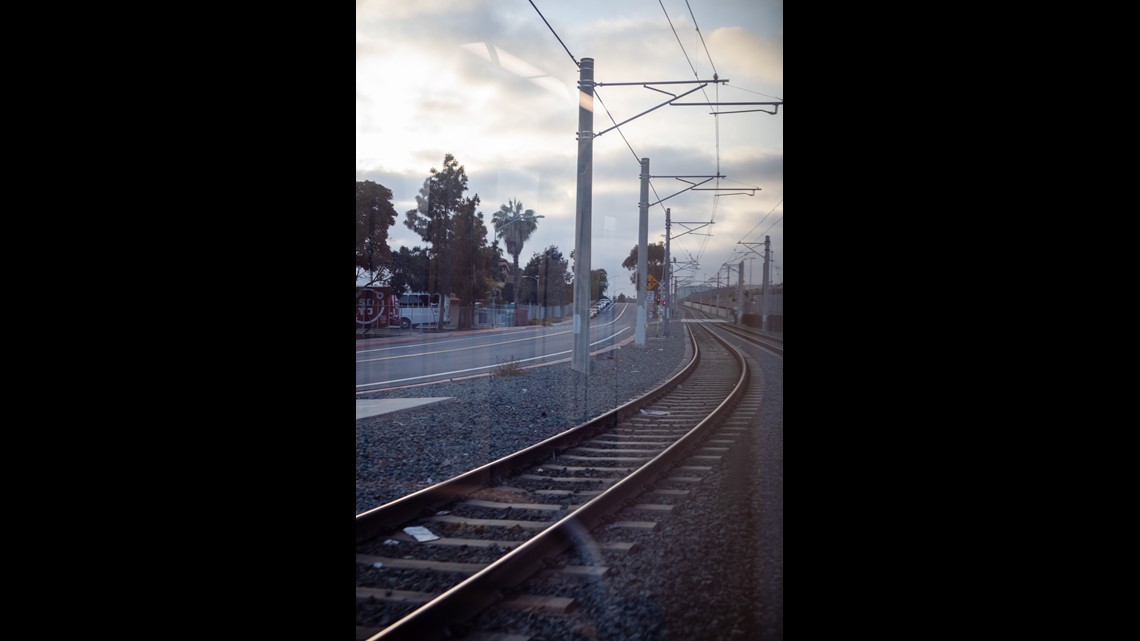
Colin Parent, head of local nonprofit Circulate San Diego, said including the San Ysidro hub in SANDAG’s latest plan is “certainly a step in the right direction,” but it doesn’t guarantee it will come to fruition.
“I would anticipate that there’s going to be a ballot measure proposed either in 2022 or 2024 that would actually put dollars behind the projects that are being contemplated by that (regional) plan,” Parent said. “And that’s really what’s going to have to happen in order for a project like this to come.”
Circulate San Diego is calling for SANDAG to consider other smaller-scale investments that would help improve mobility as the agency pursues the plan’s larger projects that will take decades to complete, such as increasing trolley frequency and more rapid bus lines.
“Those things absolutely could happen in the near term and I think from an equity perspective are generally more important for serving communities who rely on transit, who can’t afford cars, who are really struggling in our economy,” Parent said.
“And some of these flashier things maybe have some merit, but their contributions to equity are more questionable.”
SANDAG’s board is expected to vote on the plan in late 2021.
WATCH RELATED: New Otay Mesa East Port of Entry crossing to finish in 2024 (June 2021)

